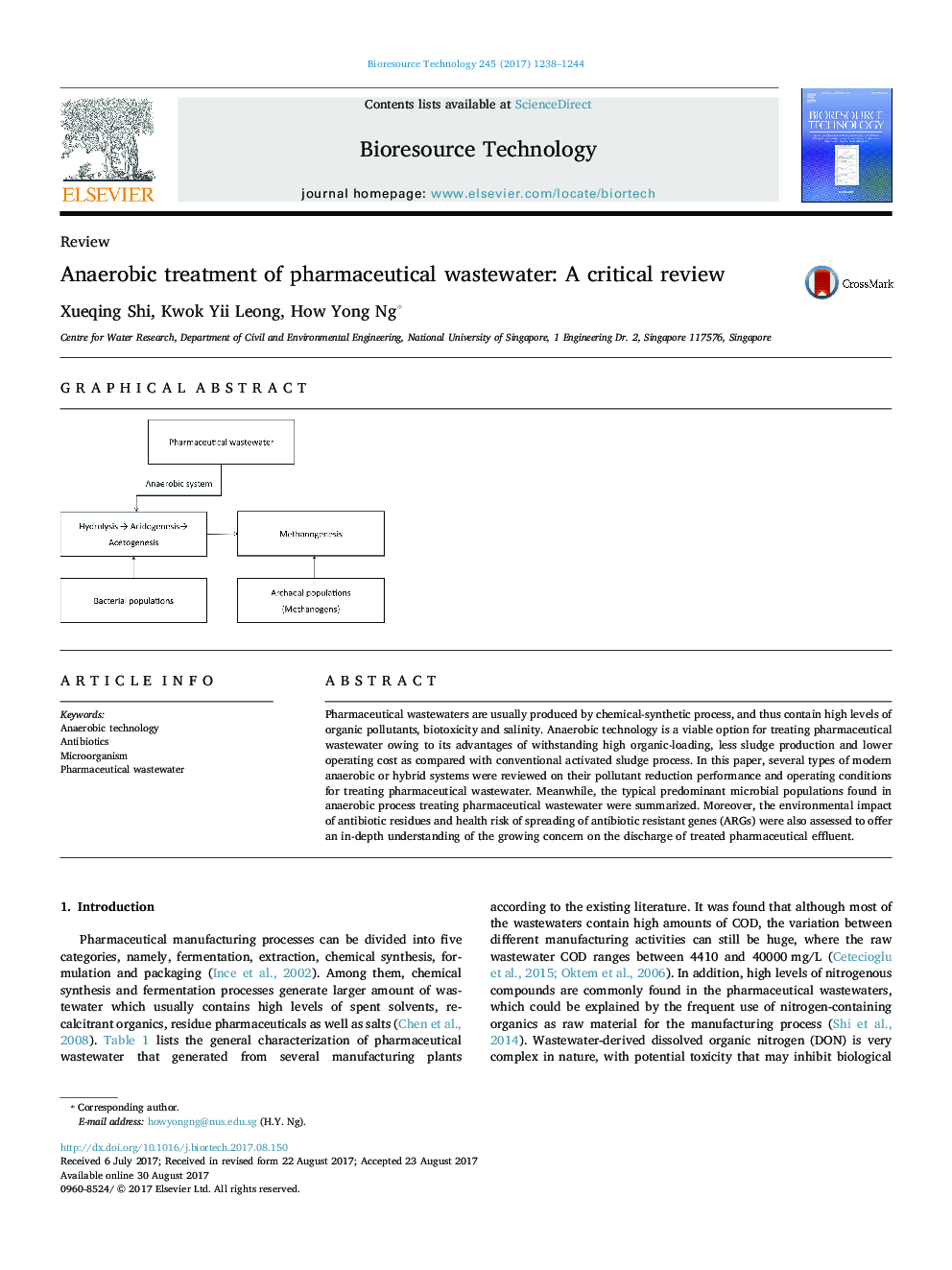| Article ID | Journal | Published Year | Pages | File Type |
|---|---|---|---|---|
| 4996757 | Bioresource Technology | 2017 | 7 Pages |
â¢Characterization of typical pharmaceutical wastewater.â¢Critical reviews on anaerobic/hybrid systems for pharmaceutical wastewater treatment.â¢Assessment of predominant microbial populations.â¢Review on antibiotic residues & spreading of ARGs with growing health risk concern.
Pharmaceutical wastewaters are usually produced by chemical-synthetic process, and thus contain high levels of organic pollutants, biotoxicity and salinity. Anaerobic technology is a viable option for treating pharmaceutical wastewater owing to its advantages of withstanding high organic-loading, less sludge production and lower operating cost as compared with conventional activated sludge process. In this paper, several types of modern anaerobic or hybrid systems were reviewed on their pollutant reduction performance and operating conditions for treating pharmaceutical wastewater. Meanwhile, the typical predominant microbial populations found in anaerobic process treating pharmaceutical wastewater were summarized. Moreover, the environmental impact of antibiotic residues and health risk of spreading of antibiotic resistant genes (ARGs) were also assessed to offer an in-depth understanding of the growing concern on the discharge of treated pharmaceutical effluent.
Graphical abstractDownload high-res image (64KB)Download full-size image
